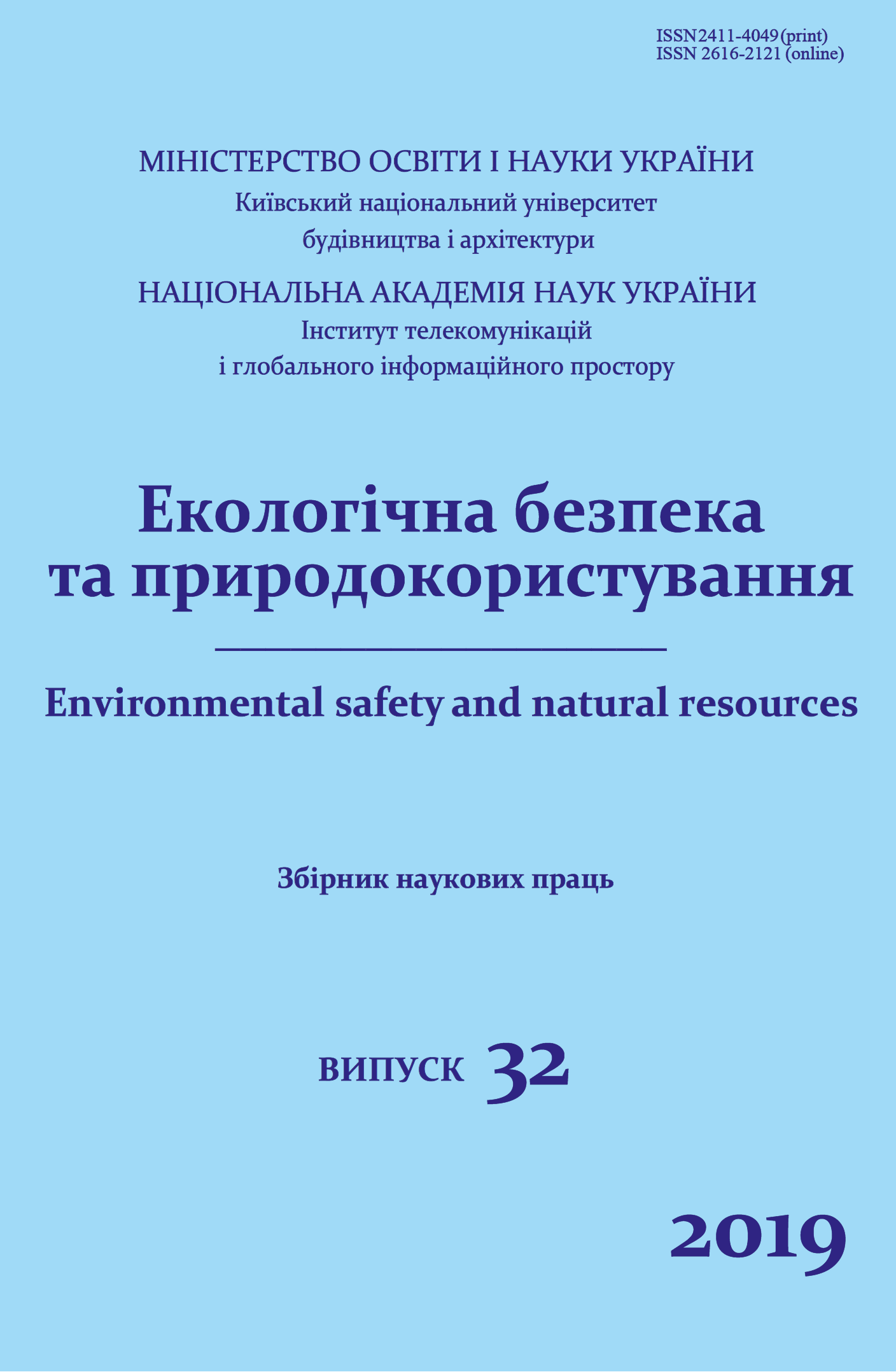Аnalysis of natural disasters and their impact on the environment
DOI:
https://doi.org/10.32347/2411-4049.2019.4.78-91Keywords:
natural disasters, consequences of natural disasters, loss, climate destabilization, gross national productAbstract
Millions of lives could be saved if states did more to prevent and reduce the risks of natural disasters. Protecting people from all sorts of disasters and accidents – one of the priorities in many countries. The disasters that have occurred show that natural disasters have no boundaries and do not choose the people. Especially in recent years, the challenge of natural disasters, accompanied by climate change, floods, mudslides, earthquakes, droughts and fires, is increasing. The quantity and total damage of the natural disasters has increased in recent years. Global changes in the environment and climate, increasing levels of seismic activity of the Earth's crust, increasing the size and power of technical systems used, progressive human intervention in nature increase the risks of large-scale natural, environmental and man-made disasters. The rate of growth of economic losses from catastrophes is reaching the indicators of economic development of most developed countries and poses a global threat to the population, nature and the world economy. The article performs analysis of the natural disasters occurred in the world and their impact on environment. Knowledge of the causes, dynamics and nature of natural disasters can reduce the threat to life and health of people, prevent or reduce material and economic losses in business, effectively carry out a complex of preventive, rescue and emergency work associated with natural disasters.
Analyzed the specific situation of occurrence of natural disasters. Particular attention is paid to assessing economic and social losses from natural disasters.
References
Danilov-Danil'yan, V. I., & Losev, K. S. (2000). Ekologicheskiy vyzov i ustoychivoye razvitiye. Moscow: Progress-traditsiya. (in Russian).
Mazur, I. I., & Ivanov, O. P. (2004). Opasnye prirodnyye protsessy. Moscow: Ekonomika. (in Russian).
Osipov, V. I. (2001). Prirodnyye katastrofy na rubezhe XXI veka. Nauka i obshchestvo, (4), 291-302. (in Russian).
Abrahamson, D. E. (1989). Challenge of Global Warming. Washington: Island Press.
Beven II, J. L., Avila, L. A., Blake, E. S., Brown, D. P., Franklin, J. L., Knabb, R. D., Pasch, R. J., Rhome, F. R. & Stewart, S. R. (2008). Annual Summary: Atlantic Hurricane Season of 2005. Monthly Weather Review (American Meteorological Society), 136(3), 1131–1141.
Blowers, A., & Hinchliffe, S. (2003). Environmental Responses. Wiley, London.
Bohle, H. (2001). Vulnerability and criticality: perspectives from social geography. IHDP Update, (2), 231-239.
Bras, R. L. (1990). Hydrology. New York: Addison-Wesley.
Delgado, J. P. (1998). Encyclopedia of underwater and maritime archaeology. New Haven, London.
Enz, R. (2006). Natural catastrophes and man-made disasters 2005. Sigma, (2), 1-40.
Enz, R., Karl, K., Mehlhorn, J., & Schwarz, S. (2008). Natural catastrophes and man-made disasters: High losses in Europe. Sigma, (1), 1-48.
Field, C. B., & Raupach, M. R. (Eds.). (2004). Global Carbon Cycle: Integrating Humans, Climate, and the Natural World. Washington: Island Press.
Field, J. G., Hempel, G., & Summerhayer, C. P. (Eds.). (2002). Oceans 2020: Science Trends and the Challenge of Sustainability. Washington: Island Press.
Flood, J. (1995). Indicators for the implementation and monitoring of Agenda. Habitat, 1(5), 13.
Gardner, J. S. (2002). Natural hazards risk in the Kullu District, Himachal Pradesh, India. The Geographical Review, 92, 172-177.
Gutberlet, J. (2003). Cities, consumption and the generation of waste. Aviso, (11), 12-19.
Hardy, J. T. (2003). Climate Change. Washington: Wiley.
Lanchester, F. W. (1917). Aircraft in warfare, the dawn of the Fourth Arm. London: Constable and company limited.
McNulty, S. G. (2002). Hurricane impacts on US forest carbon sequestration. Environmental Pollution, 116, S17-S24.
Milne, A. (2004). Doomsday: The Science of Catastrophic Events. Westport: Praeger Publisher.
Morris, J. (1997). Introduction: Climate change – prevention or adaptation. IEA Stud. Educ., (10) 13-37.
Notron, R. (2002). Early Eighteenth-Century Newspaper Reports: A Sourcebook "Natural Catastrophes", Retrieved from http://www.infopt.demon.co.uk /grub/ catastro.htm
Posner, R. A. (2004). Catastrophe: Risk and Response. Oxford: Oxford Univ. Press.
Richter, C. F. (1969). Earthquakes. Natural History, (78), 37-45.
Schneider, D. (1995). Global warming is still a hot topic. Scientific American, 272(2), 13-14.
Vogel, C., & O'Brien K. (2004). Vulnerability and global environmental change: rhetoric and reality. Aviso (An International Bulletin on Global Environmental Change and Human Security), (13), 1-8.
Walker, G. (2003). Snowball Earth: The Story of the Great Global Catastrophe that Spawned Life as We Know It. New York: Crown Publishers.
WI (2009). State of the World 2009: Into a warming World. Washington: World watch Institute.
Zanetti, A., Schwarz, S., & Lindemuth, S. (2007). Natural catastrophes and man-made disasters in 2006: Low insured losses. Sigma, (2), 1-40.
Zimmerli, P. (2003). Natural catastrophes and reinsurance. Zurich (Switzerland): Swiss Reinsurance Company.
Downloads
Published
How to Cite
Issue
Section
License
Copyright (c) 2019 Sergii I. Azarov, Oleksii S. Zadunaj

This work is licensed under a Creative Commons Attribution 4.0 International License.
The journal «Environmental safety and natural resources» works under Creative Commons Attribution 4.0 International (CC BY 4.0).
The licensing policy is compatible with the overwhelming majority of open access and archiving policies.

